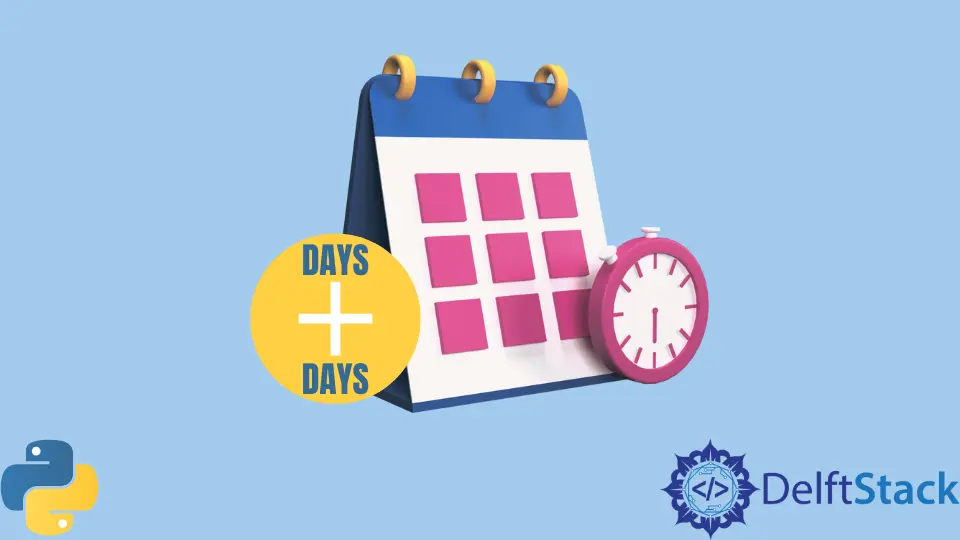在 Python 中向一个日期添加天数
-
Python 中使用
datetime.timedelta()向日期添加天数 -
在
datetime模块中使用timedelta为当前日期增加天数 - 在 Python 中使用 Pandas 模块为一个日期添加天数

本教程介绍了如何在 Python 中向日期增加天数。
Python 中使用 datetime.timedelta() 向日期添加天数
在 Python 中,datetime 模块提供了一个 datetime.timedelta() 方法。它把要添加的天数作为参数,并返回日期。datetime() 模块的 datetime.strptime() 方法将开始日期作为输入,并以 datetime.datetime 的格式返回相同的日期。
下面给出一个示例代码。
import datetime
curr_date = "12/6/20"
curr_date_temp = datetime.datetime.strptime(curr_date, "%m/%d/%y")
new_date = curr_date_temp + datetime.timedelta(days=5)
print(new_date)
输出:
2020-12-11 00:00:00
在 datetime 模块中使用 timedelta 为当前日期增加天数
Python datetime 除了它的子模块 datetime 中的 timedelta 之外,它本身也有 timedelta 方法。timedelta() 方法把要添加的天数作为参数,并以日期格式返回。date 模块也有一个 today() 方法,它返回当前日期。
该方法的基本示例如下:
from datetime import timedelta, date
Date_required = date.today() + timedelta(days=5)
print(Date_required)
输出:
2020-12-05
在 Python 中使用 Pandas 模块为一个日期添加天数
Pandas 模块提供了一个 to_datetime() 方法,它将一个日期作为参数,并将其转换为一个 pandas._libs.tslibs.timestamps.Timestamp 对象。如果没有指定日期字符串的格式,Pandas 会进行智能转换。
DateOffset() 方法接受关键词参数,如 days、months 等。它返回一个 pandas.tseries.offsets.DateOffset 对象。
下面给出一个示例代码。
import pandas as pd
initial_date = "12/5/2019"
req_date = pd.to_datetime(initial_date) + pd.DateOffset(days=3)
print(req_date)
输出:
2019-12-08 00:00:00
Syed Moiz is an experienced and versatile technical content creator. He is a computer scientist by profession. Having a sound grip on technical areas of programming languages, he is actively contributing to solving programming problems and training fledglings.
LinkedIn